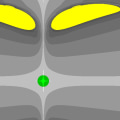Truncating is a much faster and more efficient way to delete data from a database than the traditional delete command. This is because truncating does not analyze all the records before deleting them, and it also uses less transaction space than delete. Truncating a table locks the entire table, and unlike delete, it does not return the number of rows deleted from the table. It is also faster than deletion because it only resets the high watermark.
Additionally, individual partitions can be truncated in isolation, making it possible to partially delete all of the data in the table. However, there are some limitations to using truncate. It cannot be used when a foreign key references a table or participates in an indexed view. Additionally, truncation cannot be undone, and if the process fails, a confirmation will have been issued anyway.
Furthermore, truncation cannot be done without using a DROP ANY TABLE grant. In contrast, deletion can be granted in a table to another user or role, and it can be filtered using the WHERE clause. It is also logged and can be part of a larger transaction, which means it can be undone if necessary. Overall, truncating is a much faster and more efficient way to delete data from a database than the traditional delete command.
It is important to understand the differences between truncate and delete in order to make an informed decision about which one to use for your particular situation.











